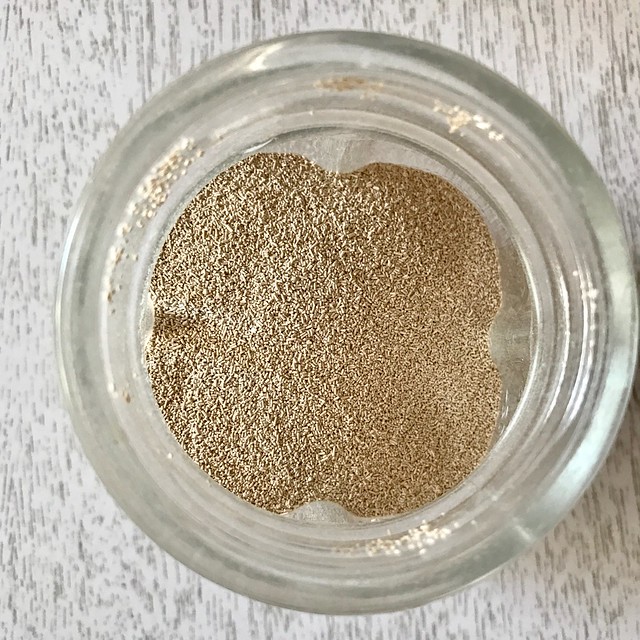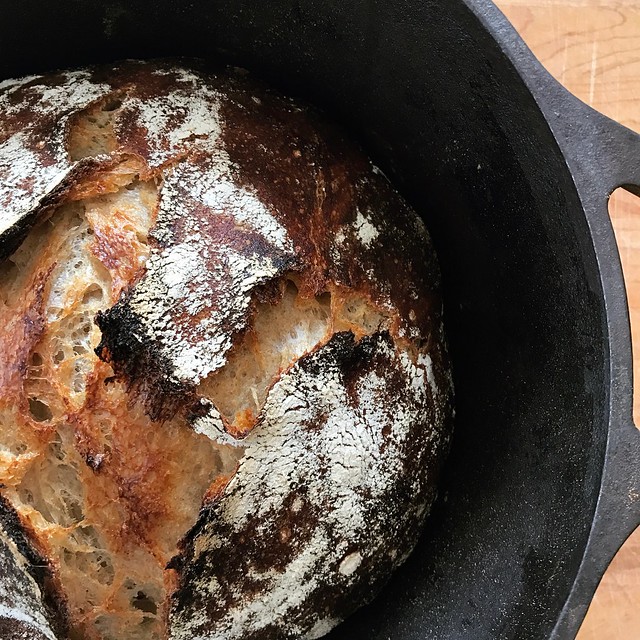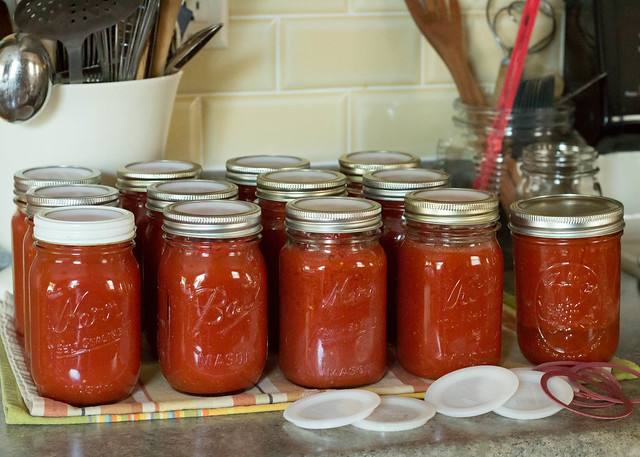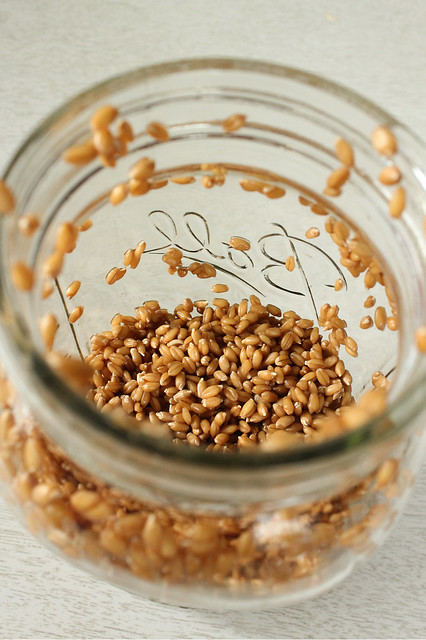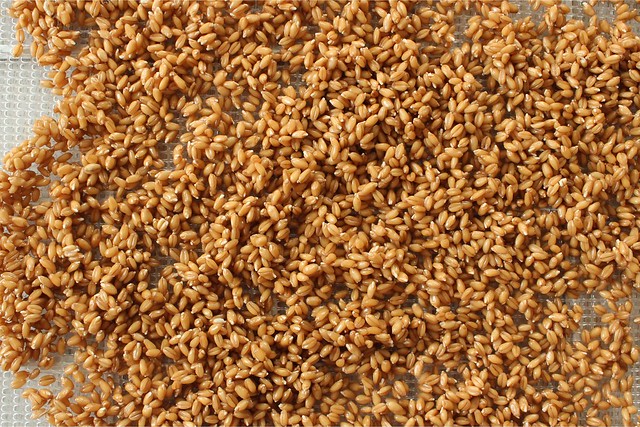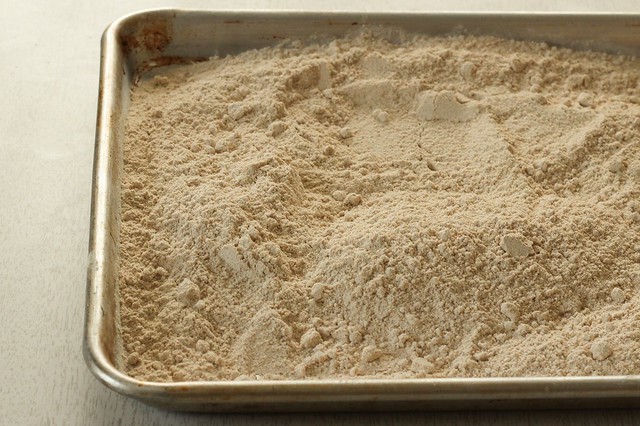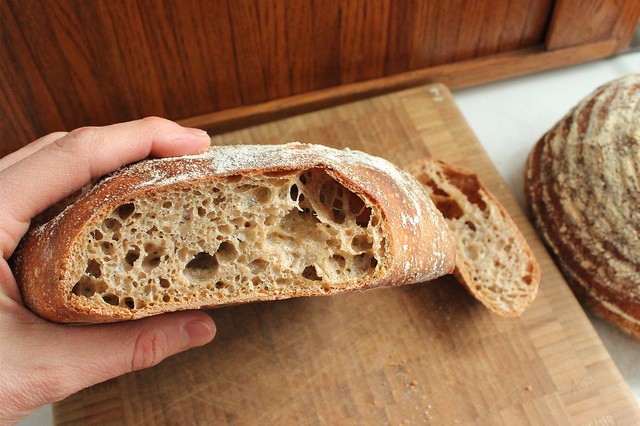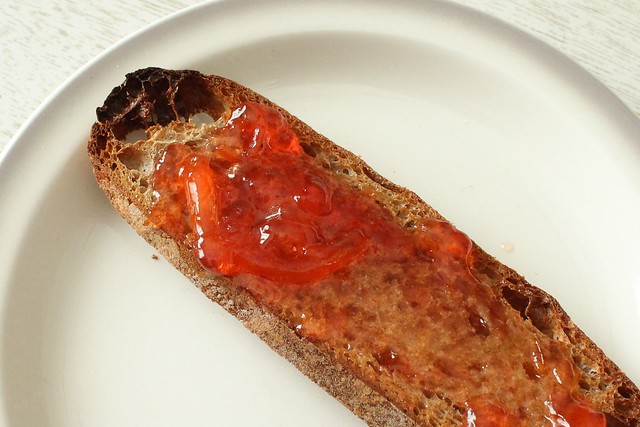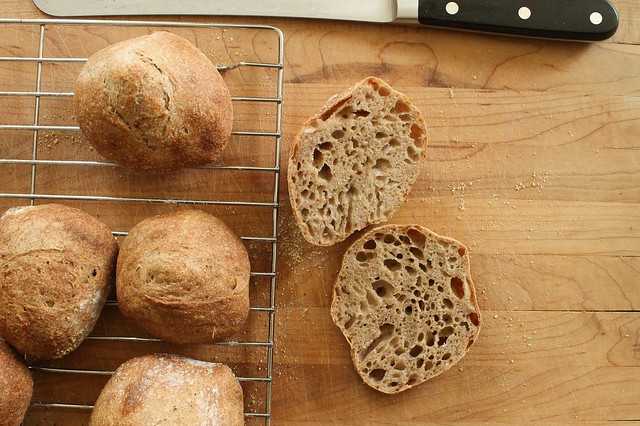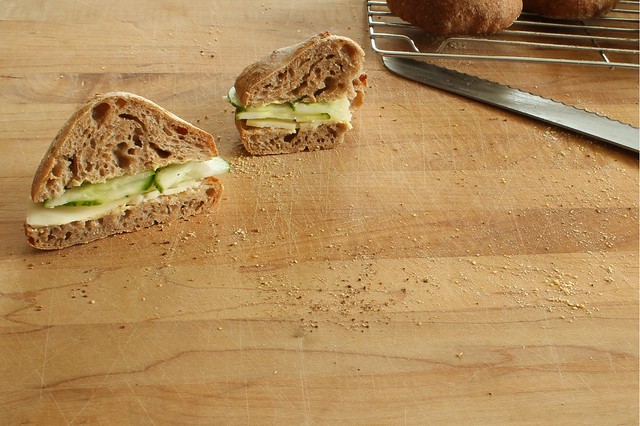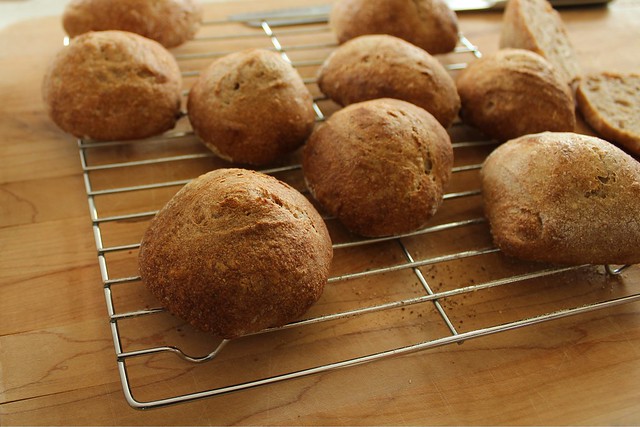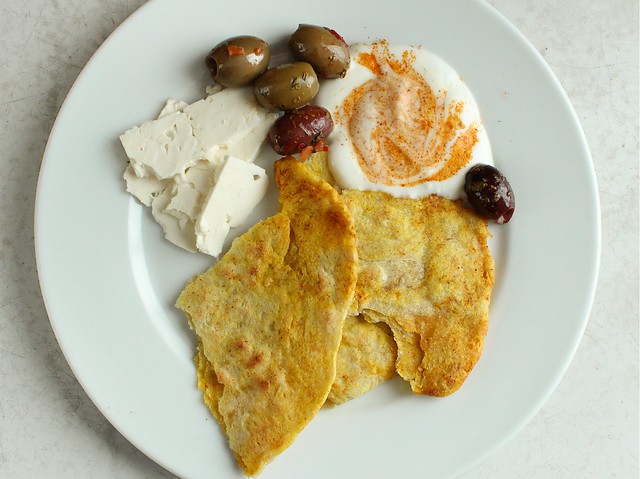So 6 months have passed. My year of change has slowed down somewhat, into a new routine of workdays and weekends. Kitchenwise (and in general), I have changed in more ways than I can count - but in all this while and with all the changes, I have never given up on baking bread.
Going back even as far as 3 years, I can see how my personal bakery has changed too. In regards to sweets, far less of them have come tumbling from the oven - in part because just about everyone I know is also cutting way back on them. But bread bakery is different; while I have baked consistently since that first baby starter was birthed back in 2010, the past several years found me adding a pinch of commercial yeast to my wild breads.
When I started on my bread journey, I thought this was cheating and I never (ever) did it. But commercial yeast is reliable, and when trying to juggle a new baby and homeschooling, I grasped that trick with both hands and held fast. So much so that I have found that I was almost nervous to go back to full-wild bread. What if I've changed so much the bread knew it too? What if I went back to airless loaves that were no joy at all to eat? I'm happy to say that since the dawn of the new year, I've gone back to full wild levain breads, and not only are they consistently good, the curve to get back to them wasn't as steep as I'd imagined it would be.
Another push that I needed for my bread change came recently when I was able to buy a grain mill from a friend who needed to downsize. It's a Magic Mill: as old as I am and working fantastically. I discovered Anarchy Acres' heirloom wheat, and before committing on a bulk sack of wheat berries, I've been using their Turkey Red which is sold in bulk at my co-op. I haven't yet worked my way up to loves made fully of fresh milled flour, but I'll get there after I buy some sieves to more effectively achieve the extractions I need.
The biggest hurdle of full wild yeast bread for me at this point in my life is time. The years I was able to spend at home were truly a luxury in so many ways, especially for one who loves to make things from scratch. I always had more time than money, and in retrospect especially, I wouldn't have wanted it any other way. If I'd never had those years, I likely wouldn't have stumbled on real bread baking in the first place and that is too depressing to imagine.
My first wild loaves had 3 day build times! And while I might have to wait for vacation days to get that going again, at least I can have full wild bread on a working man schedule. I will outline it for you. Of course, you bake in your own way and this template might not be as useful to you as it is to me. (I work from 8:00 AM- 5:00 PM with an hour off from noon to 1:00 that I'm fortunate to be able to go home for.)
Working Man Full Wild Sourdough
1 loaf of bread, easily doubled (based on ratios/methods from Ken Forkish)
STARTER NOTE: Forkish loaves are built on 80% hydration starters, and I keep a 100% one. The morning of the day I want to start bread, or 7-10 hours ahead of time, I mix up enough 80% for use in the loaf. In this case, I mix 25g. starter (my 100%, or "liquid levain"), 25g. whole wheat flour, 100g. white flour, and 100g. water and let it sit covered at room temp until I'm ready to continue - usually 5:30 PM. This amount makes enough for 1 loaf of bread. If making 2 loaves, double it.
- 302 g. white flour
- 138 g. wheat flour (this is the fresh milled Anarchy Acres stuff I'm using here)
- 342 g. water
- 2 t. kosher salt
- 108-160 g. levain starter (from above, I use more when it's chilly in the house)
Around 5:30 PM, mix white and wheat flours with water and autolyse for 30 minutes. Then, add salt and starter and mix well by hand until well incorporated. Bulk rise for 12-15 hours give or take, until about triple in size, folding 3-4 times before bedtime. I'm pretty loose on this timing, it can be every 30 minutes, or just as you remember as you are walking by. The loaf I made today, I totally forgot about and did 3 folds about 20 minutes apart just before bed last night, a full 5 hours after mixing and it was absolutely fine.
After the bulk rise, you can bench rest for 15-30 minutes or not (also depending on time), shape the loaf and figure about 4 hours on the final rise. If I do this on a work day, I set my oven to time bake an hour before my lunch break, and be sure to put a cast iron dutch oven in there. Bake temp is 475, and I bake in a covered pot for 30 minutes and without the lid for 15. My workplace is less than 5 minutes from home, so this works out fine if I don't worry about being able to hear the bread sing after it bakes. (This bread seems to be consistently "sticky", so I line a brotform with cloth and sprinkle well with 50-50 mixture of rice and ap flours. I also put the bread into the brotform seam side down - so that after tipping it out into the pot, the seam side is up - and do not slash it. I let it break in natural form the way Forkish recommends.)
I mean to experiment with proofing the shaped loaf under refrigeration and then baking in the evening, but I haven't tried it yet... mostly because I'm afraid I'll be getting up in the middle of the night with sluggish rising times. In the past I have happily gotten up many times mid-sleep to check on kitchen projects, but working life - or working "outside the home" life - is different, and sitting behind a desk when tired is infinitely more trying than just being a bit sleepy and carrying on with working around the house and yard...
We have been sick a record number of days this winter, and I blame mild weather and having a boy in day care for the first time. Last weekend I was down for the count, not baking or cooking or eating or caring about any of it. This bread for the grilled cheese abovewas from the week before, and I couldn't help but be so thankful for it for lunches after I got my appetite back. Well over a week old, and it was still stellar toast with a truly lovely, deep flavor.
This is only part of why I can't give up on bread. The real stuff has keeping power, and it makes a meal all by itself, or enhances a meal I get the time to make. Working with dough somehow keeps me grounded, thinking that one tiny part of my old self is still in there and kept alive and thriving. I try not to think about it too much, it becomes overwhelming - kind of like putting words back on a page after a half a year of silence. You know the silence wasn't there without reason, but you can't figure on why the words are not just pouring out all over... instead it's like coaxing, pulling them out, unsure of a purpose.
I guess my purpose was more utilitarian in detailing my baking notes for my last four or so loaves of bread. For those that might still keep an eye on what happens in my tiny corner of the Internet, I'm still here. I'm getting stronger. I'm getting more confident with wild yeast again. I'm still baking. I'm not giving up.

